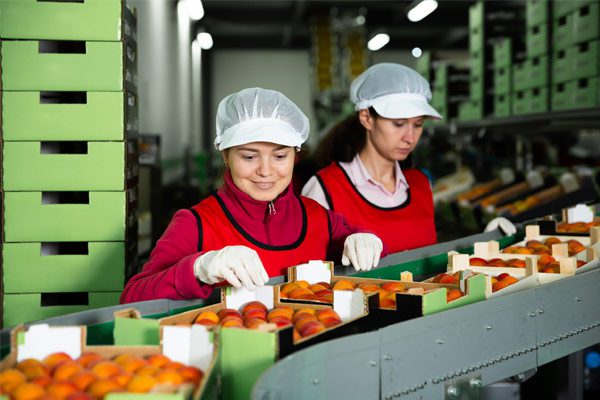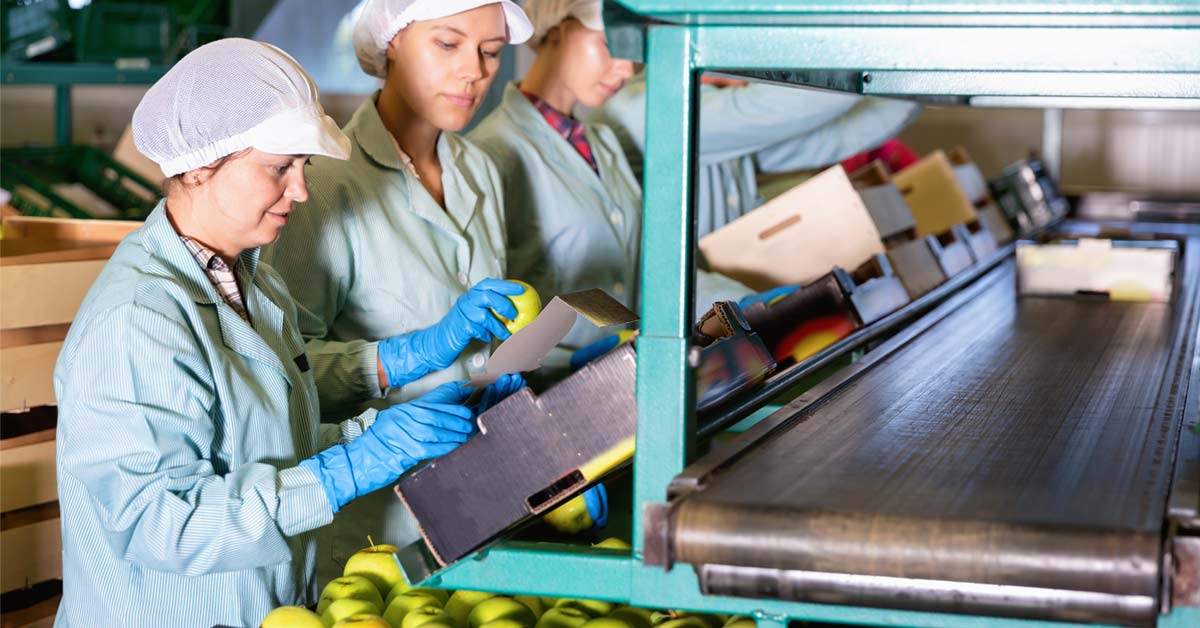When it comes to food, safety and humidity control are paramount. Today’s food processing plants are faced with environmental factors related to climate change that can affect the way they manufacture their products. The water content of the food produced is also an important factor in a product’s appearance, taste, weight and shelf life. This can range from 1% to 99% of a food’s weight with nuts and cereals containing the lowest amount and fruits and vegetables such as strawberries, spinach and celery containing the most.
In addition to these impacts, the risk of slips and falls is one of the most common hazards due to exposure to wet, greasy floors and high temperatures. Therefore, the main objectives of humidity control in these facilities are to increase productivity, maintain product quality and reduce food waste.
At Shoes For Crews, we understand that maintaining high levels of productivity and a safe working environment are critical for food and beverage plants. See how your facility can achieve optimal humidity levels by focusing on these five key areas.
1. Monitor the percentage of relative humidity indoors
Relative humidity (%RH) is the percentage of water in the air compared to the maximum it can hold at a given temperature. It is expressed as a percentage and indicates how much water vapour is present at a particular temperature relative to its saturation point. Warmer air holds more water, but when cold air is heated indoors, it can extract moisture from food, resulting in a loss of quality.
Many food processes require specific levels of humidity to allow a reaction or effect to occur. Finding the right balance depends on the type of product. Bread baking, cheese ripening and crop storage all tend to require an environment of at least 75%RH to 90%RH. The term equilibrium moisture content (EMC) is used to describe the internal moisture content of a product.
2. Prevent evaporative losses and surface drying
Evaporation of moisture from produce can have several serious effects. If your facility sells by weight, it could suffer an immediate reduction in yield if exposed to such losses. Even the slightest drop in moisture will result in a direct reduction of profit, which means there will be less product to sell. In addition to yield loss, appearance, shelf life and quality can also all be affected.
Loss of moisture from food surfaces can lead to the formation of unwanted skins or crusts. This can dull the appearance or appeal of the food and cause it to split or crack. In applications such as cheese maturing, dough fermentation, bread baking and biscuit production, humidification prevents this.
3. Track and monitor production lines continuously
To ensure maximum output, production lines require precise control. Excessive moisture in the air can slow down production if not monitored accurately. This type of unregulated humidity can cause hold-ups at these stages of the production process, where products stick together, making them difficult to weigh and separate for packaging. To prevent loss of time, money and resources, controlling the humidity levels and closely monitoring the lines can improve the overall quality and presentation of your products.
Besides excess moisture in the air and on machine surfaces, food production areas require constant disinfection and cleaning. Some surfaces can be slippery and pose a natural hazard to your employees. Investing in high-quality, durable water-repellent or waterproof footwear can help prevent slips and falls and save your company valuable time and money in the long run.





